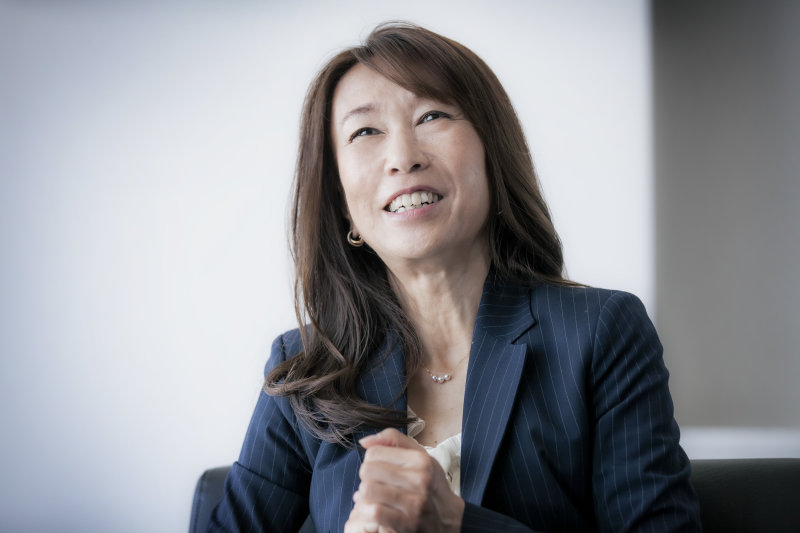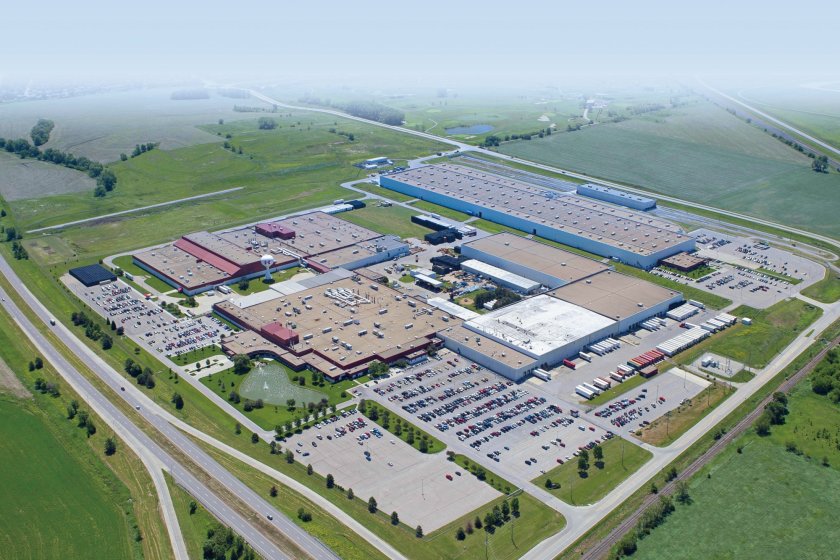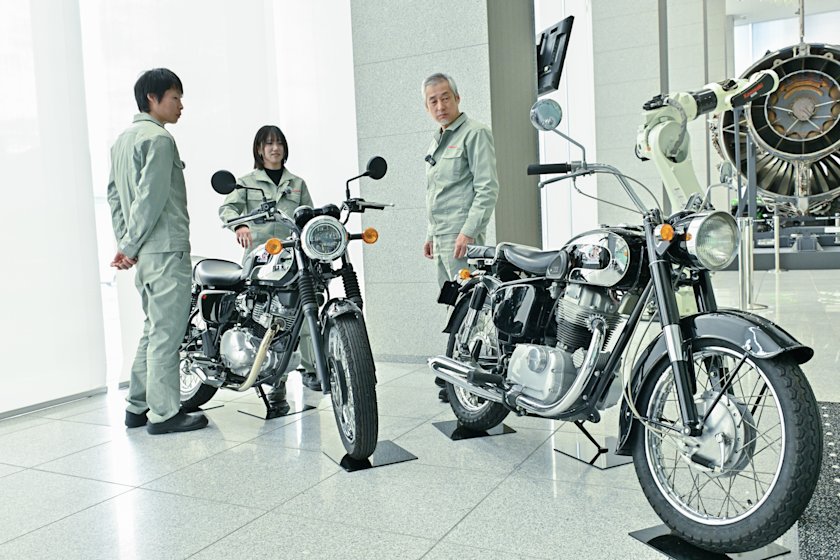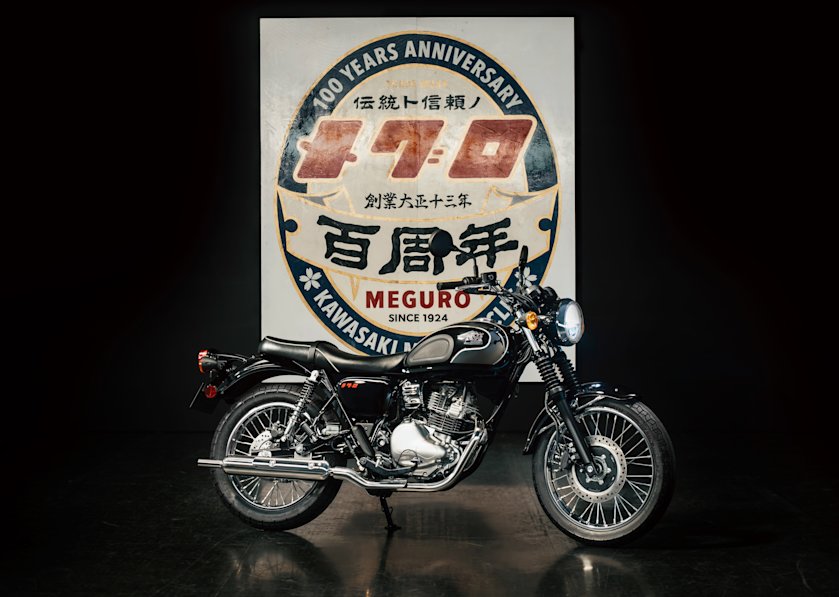As a Leader and Rider. The Tomorrow of Motorcycles as Viewed by the President

Eiko Kirino became the president and representative director of Kawasaki Motors, Japan, on 1st October, 2021. What does the first female top management of a company belonging to the motorcycle industry foresee as the future? This article is an interview with her about interest of bikes, principles of work, and her vision of the future.
Magical Vehicles That Inspire—“You Can Go Anywhere”
“In reality, motorcycles are vehicles of wonder,” says Kirino, who has spent time with diverse types of mobility since joining Kawasaki. The vehicles not only include motorcycles but also Jet Skis, all-terrain vehicles (ATVs), and other off-road four wheelers, such as the MULE™. “However, There is an attractive feature that only motorcycles have,” Kirino comments, and adds, “It makes me feel my heart is released and free from everything so that I think that I can go anywhere.”
Was she born a motorcyclist? Actually no. She confesses that she loved cars when she was a little child. When she was in kindergarten and the teacher prompted children to present their dreams of the future, she imitated many of her friends and said “to be a pretty bride,” which was not her true wish. After that, she still continued to search for herself about what she wanted to do and what she liked. While at university, she tried different clubs but did not find any indication. Eventually, she took a big interest in motorcycles at the age of nineteen.
Kirino made up her mind to obtain a motorcycle license while she had free time before graduation, so she enrolled in a driving school and acquired a license to drive a mid-sized motorcycle. She visited a motorcycle store with her brand-new license in hand, as if it were a treasure, to buy a racer-replica model with a 400 cc four-cylinder engine. However, the dealer told her that maneuvering that type of motorcycle would be too difficult for a beginner. As a result, it forced her to purchase the Kawasaki GPX250R with its 250 cc two-cylinder engine instead. “However, I was happy to ride a motorcycle on public roads by myself for the first time. Nevertheless, I suddenly realized that 50 cc scooters overtook me one after another. I wondered why because I was very serious about riding. Then, I looked at the speedometer, which indicated only 30 km/h,” she said laughing.
“When I went alone to ride on winding mountain roads in Hakone, I barely moved at the same pace as other bikers going downhill but could not keep up at all going uphill. Responding to friends’ advice, I decided to change to a bigger engine.” At that time, the only way to lift the restrictions from my motorcycle license was to go to a municipal test center and pass the practical test for the large-sized motorcycle license. However, clearing the barrier was extremely hard for a novice rider. “My body is relatively small, you know, so the hurdle was especially too high. I visited the test site every day to watch people taking the test.” She memorized the test routes and the features of the test bikes with the intention of finding better manners for her. Such a trial and error process led Kirino to acquire a large-sized motorcycle license four months after getting the mid-sized motorcycle license.
Since then, her buddy has always been a Kawasaki, except when she was stationed in France. Even with a long history as a rider, Kirino says she does not see the profound part of motorcycles yet. “It must happen once in a while that something will not go well even on the same road on the same machine. Motorcycles have such a nature. I am always training, which is endless. I think it also applies to the world champion, Jonathan Rea.” For that reason, each individual has a different riding style, level of enjoyment, technique, and, of course, motorcycle model— every variation should be respected, Kirino says. “I think all motorcycle fans enjoy riding on any machine at any place. It is not a complicated matter.”

Wish to Make Circuits More Familiar
In her tenth year at Kawasaki, Kirino was transferred to Kawasaki Motors Europe, France office. It was still rare for a woman to be stationed overseas. She felt that the distance between motorcycles and people was very close in France. “French people love races, so the toll roads are open for free during an endurance race. We saw many motorcycles drove to the circuit, and elderly ladies with grandchildren on an overpass across the street waved at us. The existence of motorcycles is recognized on every corner of each town.”
Japan has many racetracks from international FIA-licensed courses to small tracks where one minute is enough to complete one lap. Hoping that as many people as possible like these favorable circumstances, Kirino started to organize one-make racing with the Ninja ZX-25R in 2021. “Circuits are pursued by images of great cost, fear of accidents, and a high hurdle to participate there. For example, in the case of the Supersport model Ninja ZX-10R and Ninja ZX-6R, each spare part is expensive, and the costs of replacing tires cannot be ignored. In order to make circuits more familiar, I planned one-make events with the Ninja ZX-25R, which uses relatively inexpensive parts and is easy to ride. I thought that participants could move up to the next step as they became accustomed to racing and had fun, and the first thing I wanted to do was devising opportunities for the users to come to the circuit.” Kirino talks about her aim in 2022 to organize more riding lessons for beginners on small circuits and off-road parks.
Viewpoint Emphasized by the First Female Head in the Industry
“That bridge was built by your country, Japan.” ―― the words helped Kirino discover a clue as a university student trying to decide on a career when she was travelling in Turkey. She majored in Persian and frequently visited Iran and the neighboring country, Turkey. One day, a Turkish man said the above words to her, pointing at a large bridge. Seeing the contribution of Japanese technological prowess to the development of an emerging country with her own eyes, she decided to find employment with a heavy industry that produced many things with technology. After she spent those days, she actually entered Kawasaki Heavy Industries, Ltd.
Although her initial wish was to be assigned to a sales position in the plant division in Tokyo, only the type of occupation came true. The company’s notification of appointment ordered her to work in the motorcycle division in Akashi. “In spite of the actual state, I had the firm resolve to carry out the given position for three years at minimum. Even if the first impression was one of boredom, anything could be very interesting from a different perspective. You can find the seeds of motivation even during unhappy tasks. I think a person who focuses on a single aspect and gives up because of it will not be able to continue with anything. It sometimes occurs that you pick up the most mouth-watering cake but then the choices of others seem more delicious,” she said laughing.
The motorcycle world used to be a society for men. “I was always the sole female at meetings, on business trips, and at development test sites. Some people said to me, ‘A mere woman shouldn’t intrude on us.’ But I told them that gender has nothing to do with business, over and over.” Now, Kirino is the new leader of Kawasaki Motors Corporation Japan. “I cannot give up on anything that I decided to do, like I actually succeeded in my challenge to lift the restrictions on the motorcycle license.” At the test center, Kirino earnestly researched a strategy to make up for her small body. In the same way as that time, she consistently found out tasks she wanted to complete and went ahead looking forward, even when assigned in an undesired department or when placed in situations where no other woman was. Despite the thick walls in front of the first female chief in the industry, she has observed them from a different perspective and found ways to step forward on every occasion.

“Taste” of Kawasaki Will Remain the Same
What is the thought of Kirino, as the person described above, about the future of motorcycles?
In her opinion, internal-combustion engines will never go extinct though electrification will sharply accelerate in both the four- and two-wheeler industries. “There should be various choices for our future, like engines driven by electricity or those driven by hydrogen, and even internal combustion engines can remain only if non-carbon fuel becomes available. I believe the mission of a manufacturer is to provide customers with diverse options backed by technological capabilities. Today, large motorcycles can travel at least 300 km with a full tank. However, no electric motorcycle can travel over the same distance with the same performance even after being fully charged. This is a theme, for that not only vehicle body manufactures but also all relevant parties, including battery makers and planners of infrastructure, must work together to seek solutions.”
Kirino asserts that Kawasaki-ness never disappears even if we are led into a course of electric motorcycles. “Formerly, internal combustion engines had a fuel delivery device called carburetor,*1 which was then replaced by a fuel injection system as technology advanced. Nevertheless, the inherent character of Kawasaki did not change. While an anti-lock braking system (ABS) is commonly used in motorcycles today, the characteristics are completely different by manufacturer because of the timing of activation and the control method.”
Even now, Kirino often makes time in her busy schedule to go touring or participate in a fan gathering riding her beloved Ninja 650. For Kirino, motorcycles are an essential part of both business and private time. Kirino, who became the president of Kawasaki Motors Corporation Japan definitely as a woman having been loved by motorcycles, says this at the end and laughs, “It is not correct. I myself love motorcycles.”
*1: A device that mixes liquid fuel and air to produce a combustive gas mixture and supplies it to the combustion chamber of the engine. Although it had been used in cars and motorcycles with gasoline engines for a long time, the rise of electronic injection systems where a computer controls fuel injection gradually reduced its application.

President and Representative Director
What is President Kirino’s personality? Profile of the Female Leader in the Eyes of an Employee Who Worked Together

Direct Distributor Sales Department,
Marketing & Sales Division,
Kawasaki Motors, Ltd.
Discover Your Own Enjoyment and Lead It to Success
I had worked for about three years in the Marketing Department together with Ms. Kirino, who was the Department Senior Manager then. There were a large number of new business activities and projects at that time, including the startup of the Ninja ZX-25R one-make racing, the first online new model launch during the COVID-19 pandemic, and the launch of a new corporation (Kawasaki Motors), and all of them had no precedent at the company. In addition to the considerable challenges even if it had been under ordinary conditions, Ms. Kirino was in a tough position to lead the teams. However, it stands out in my memory that she seemed to have fun doing her job. I recognized that finding her own enjoyment in anything was linked to successful results. Through my work with Ms. Kirino, I learned the attitude and importance of finding delight even in a hard situation.







